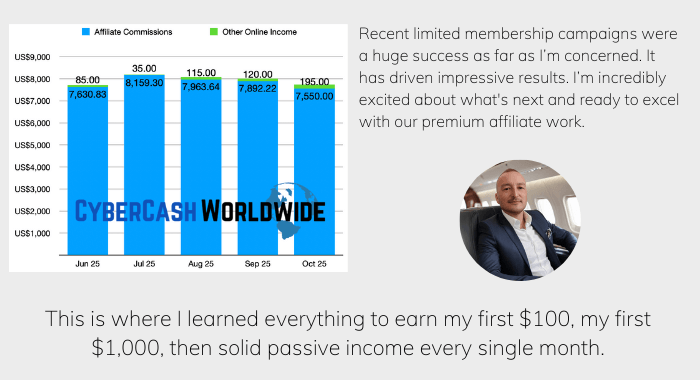Domain name investing used to be like striking gold - buy a snappy URL, sit on it, and flip it for a fortune. Those days are gone, and the market’s a graveyard for anyone chasing that dream now. From oversaturation to tech shifts, the reasons stack up fast. Let’s unpack why this hustle’s become a money pit.

The Glory Days Are History
Domain investing peaked when the internet was young and URLs were prime real estate. Back in the ‘90s and early 2000s, a good domain could fetch millions. Now, the market’s flooded, and demand for premium names has tanked. The hype’s faded, and reality’s hit hard.
- Early wins set a false standard. Names like Business.com sold for $7.5 million in 1999, sparking a gold rush. Speculators thought every short domain was a jackpot, but those deals are ancient history. Today, only a handful of ultra-rare names move for big bucks.
- Generic names lost their edge. Words like “cars” or “shoes” used to draw buyers willing to pay top dollar. Now, businesses prioritize branding over generic URLs, like Nike using Nike.com instead of Shoes.com. The market for one-word domains is nearly dead.
- Auctions expose the oversupply. Platforms like GoDaddy Auctions list thousands of domains daily, most going for peanuts. A name like GreatDeals.com might sound hot, but it’ll likely sit unsold or fetch under $100. Buyers know they’ve got endless options.
- Dot-com isn’t king anymore. Alternative extensions like .co, .io, or .shop have diluted the .com monopoly. Startups like Flow.io thrive without a premium .com, cutting demand for traditional domains. Investors holding .coms are stuck with outdated assets.
- Big sales are outliers. A rare sale like Voice.com for $30 million in 2019 grabs headlines, but it’s not the norm. Most investors never see six figures, let alone millions. The gap between hype and reality crushes small-time flippers.
The Market’s Oversaturated
Too many domains, too few buyers - that’s the mess investors face now. Every decent name’s been registered, and new ones hit the market daily. Speculators are drowning in inventory no one wants. The supply-demand imbalance kills any chance of profit.
- Registries pump out new extensions. ICANN’s release of hundreds of TLDs like .xyz, .online, and .club flooded the market. Businesses pick niche extensions over pricey .coms, like Coffee.club for a café. Investors can’t compete with endless cheap alternatives.
- Squatters hoard names for nothing. Tools like Namecheap let people grab domains for $10 a year, holding them indefinitely. A name like BestLaptops.com might be parked with no real buyer interest. This clogs the market with dead weight.
- Resale platforms are a ghost town. Sites like Sedo or Flippa list thousands of domains, but sales are slow and prices are low. A domain like QuickLoans.com might get bids under $50, if any. Buyers scroll past, knowing better deals exist.
- Premium renewals bleed you dry. Premium domains often come with renewal fees of $100-$500 a year, even if unsold. Holding CoolGadgets.com for a decade could cost thousands with no return. Investors end up trapped in a cycle of sunk costs.
- AI tools kill keyword value. Search engines like Google prioritize content over domain names now. A site like TechBit.com ranks no better than TechBit.xyz if the content’s solid. Keyword-stuffed domains are relics of a bygone SEO era.
Tech Shifts Killed the Game
The internet’s evolved, and domains aren’t the golden ticket they used to be. Social media, apps, and new tech have shifted how businesses reach people. Investing in names can be like betting on flip phones in a smartphone world. The rules have changed, and domains are left behind.
- Social media trumps URLs. Platforms like Instagram or TikTok drive traffic way better than a catchy domain. A business like @VintageVibes thrives on followers, not VintageVibes.com. Domains are an afterthought for modern marketing.
- Apps bypass browsers entirely. Companies like Uber or DoorDash live in app stores, not web addresses. Their users don’t type Uber.com; they open the app. Domain investors are betting on a shrinking part of the internet.
- Blockchain domains are niche noise. New systems like .eth or .crypto promise decentralized URLs, but adoption’s tiny. Most businesses stick to traditional domains or skip them altogether. Investors chasing blockchain names often lose big.
- Voice search changes the game. Alexa and Siri let users find businesses without typing URLs. A restaurant like Joe’s Pizza gets found via voice, not JoesPizza.com. Domain value drops when URLs aren’t the entry point.
- Branding beats domain names. Companies like Tesla or Airbnb build recognition through unique names, not generic URLs. Tesla.com wasn’t a million-dollar buy; it was just their name. Investors banking on generic names miss the memo.

The Costs Eat You Alive
So domain investing is a money sink. From buying to holding to selling, the expenses pile up fast. Most investors lose more than they make, and the grind’s relentless. You’re fighting a losing battle against fees and time.
- Upfront costs burn a hole. Premium domains on marketplaces like BrandBucket can cost $5,000-$50,000 to buy. You’re betting big on a resale that might never happen. Most sit unsold, eating your budget.
- Renewal fees never stop. Even mid-tier domains like FastCars.com might cost $50-$200 a year to renew. Hold a portfolio of 20 names, and you’re out thousands annually with no guaranteed return. It’s a slow bleed that adds up.
- Marketing your domains is a slog. Listing on Sedo or Flippa takes time, and you might pay for featured spots to stand out. Even then, buyers rarely bite unless the price is dirt cheap. You’re stuck hustling for scraps.
- Taxes hit hard on rare wins. If you do sell a domain for profit, capital gains taxes can take a chunk. A $10,000 sale might net you $7,000 after fees and taxes. The payout’s rarely worth the effort.
- Time is a hidden cost. Researching, buying, and managing domains eats hours you’ll never get back. A portfolio of 50 names could take 10 hours a week to maintain. That’s time better spent on a side hustle with real returns.
Buyers Aren’t Biting
The demand for premium domains has dried up. Businesses don’t need a perfect URL to succeed anymore. Investors are stuck with names nobody wants, no matter how “memorable” they seem. The market’s moved on, and sellers are left holding the bag.
- Startups prioritize branding over domains. A company like Notion uses Notion.so, not some pricey .com. They build value through their product, not their URL. Investors with names like BestNotes.com are out of luck.
- Big companies buy direct. Giants like Amazon or Google negotiate privately for domains they want, like Kindle.com. They don’t browse Sedo for deals. Small investors rarely get a seat at that table.
- End users want developed sites. Buyers prefer a domain with an existing site, traffic, and revenue over a raw name. Selling FitnessGear.com is tough if it’s just a parked page. Investors have to build something to even get noticed.
- Lowball offers are the norm. Even decent names like CloudBackup.com get bids of $50-$100 on auction sites. Buyers know the market’s flooded and haggle hard. Sellers either take pennies or hold forever.
- Niche domains are a trap. Names like VeganRecipes.com sound great but only appeal to a tiny pool of buyers. If no one bites, you’re stuck with a useless asset. Broad names don’t fare much better either.
The Scams and Pitfalls
The domain game’s riddled with traps that screw over newbies and veterans alike. Scammers, shady brokers, and bad deals lurk everywhere. Even honest investors face risks that tank their efforts. It’s a minefield that’s hard to navigate.
- Fake buyers waste your time. Scammers on platforms like Flippa might “offer” big money for your domain, then ghost or demand shady payment methods. You spend weeks chasing a deal that never existed. It’s a common hustle that burns sellers out.
- Broker fees eat profits. Some brokers charge 10-20% commission on sales, even for small deals. Selling CoolTech.com for $5,000 might leave you with $4,000 after fees. You’re better off selling direct, but that’s a slog too.
- Expired domains bite back. If you miss a renewal, someone else can snatch your domain for cheap. A name like QuickFit.com could be gone in hours if you slip up. It’s a gut-punch after years of holding.
- Legal fights drain you. Trademark disputes, like someone claiming “Apple” in your domain, can lead to costly lawsuits. You might lose the domain and pay legal fees. It’s a risk that looms over any premium name.
- Pump-and-dump schemes trick newbies. Shady newsletters hype “hot” domains to drive up prices, then sellers dump them on suckers. You buy TechTrend.com for $10,000, only to find it’s worth $100. The hype’s gone by the time you’re stuck with it.
What’s Next for Investors
If domains are dead, what’s left for hustlers looking to make a buck? The internet’s still full of opportunities, but they’re not in URLs. Smart players pivot to where the real action is. Here’s where the energy’s been shifted now.
- Content creation beats domain flipping. Building a site with traffic, like a blog on fitness or tech, draws real buyers. A domain with 10,000 monthly visitors sells faster than a bare name like FitZone.com. It’s work, but the payoff’s better.
- NFTs and digital assets are hotter. While risky, NFTs tied to art or gaming have more buzz than domains. A digital collectible on OpenSea might flip for thousands in days. Domains can’t match that speed or hype.
- Social media handles are the new domains. A TikTok handle with followers, like @TechTalks, can sell for more than a domain. Businesses value built-in audiences over URLs. It’s a faster way to cash in.
- E-commerce stores flip for profit. Platforms like Shopify let you build a store and sell it on Exchange for five figures. A domain like ShopGear.com is worthless without sales data. Real revenue trumps a catchy name.
- Crypto investments draw bigger bets. Bitcoin or altcoins, while volatile, offer better returns than domains for risk-takers. A $1,000 crypto buy might double in a month, unlike a domain sitting for years. It’s a wild ride but beats waiting for a buyer.
Look, domain name investing’s a relic, bleeding money and time with no real payoff. The internet’s moved on, and smart hustlers are chasing greener fields. If you’re still holding a portfolio of URLs, cut your losses and pivot. The future’s in content, crypto, or social - not some dusty .com.

